Why does the rose dry up and what to do?
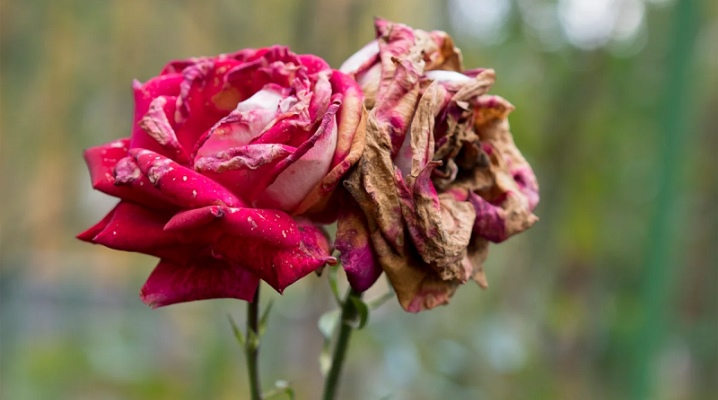
Indoor or garden rose is considered a delicate plant. And for beginners, she really often presents unpleasant surprises. Why a rose dries up, loses leaves is one of the most popular questions.


Bad conditions
Roses need a mild climate. No wonder the most famous originator of these flowers - David Austin - lives in the UK, where it can be humid and cloudy, but temperature fluctuations during the year are smoothed out by the presence of the ocean. In more contrasting conditions, the rose feels worse. In the rooms, the following parameters will be optimal for her:
- up to + 26 ° С in summer, from + 10 ° С to + 16 ° С in winter;
- average humidity - about 50%;
- abundant diffused light, a small amount of direct sunlight is permissible, for example, a couple of hours in the afternoon;
- watering as needed, in case of drying out of the soil by 2 cm;
- necessarily soft, well-breathing soil, with a sufficient content of humus, peat and sand;
- lack of drafts and at the same time a sufficient amount of fresh air.
Violation of any of these parameters can lead to the fact that the leaves dry, fall off, the bush is ugly exposed from below. The specific reason that the rose dries up may be several factors at once. Low temperature combined with high humidity due to too dense soil leads to root rot. The leaves wilt, turn yellow, then fall off.
The most common cause in rooms is excessively dry air. A bush in a pot is placed in the brightest place, there may be radiators below. And even if there is sufficient humidity in the rooms, there may be an island of dryness locally due to the heat constantly coming from below and the sun's rays heating the pot. The plant lacks moisture both in the root zone and in the crown area. The leaves, starting from the lower ones, dry and fly around.
Roses must be sprayed on the leaf at least 1 time per day. In this case, it is important that fresh air gets into the room, but there is no draft.

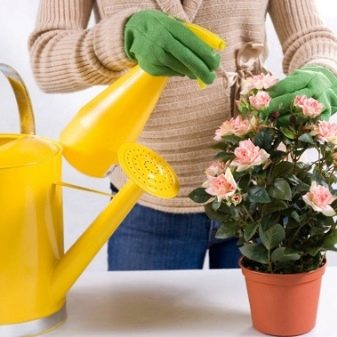
Improper care
Mistakes in leaving most often lead to two final reasons for leaf fall:
- excess moisture - the root system begins to rot;
- lack of moisture - the plant dries up.
In both cases, the leaves will fly around, only in different ways. In the first, the rose turns yellow, the foliage becomes soft, stays on the stalks for a long time, then falls off. In the second, the leaves lose their turgor, then they begin to turn yellow and dry at the same time, fly around quickly.
What to do? In each case, it is necessary to look for specific deficiencies in care in order to save the plant. The reasons may not be obvious. Sometimes it is enough to move the pot to a new location or wrap it in white paper.
Emergency treatment is also different for both situations. In the first case, it is necessary to urgently reduce watering, in case of severe damage, the plant is removed from the pot, the root system is examined. In the second, watering must be increased.

Let's list the possible mistakes in caring for indoor and garden roses.
- Watering with cold, unstable water. Cold water is stressful for plant roots. Unsettled contains a lot of salts, they make the soil heavier, the rose absorbs nutrients worse, gradually begins to weaken.
- Pot too tight. Mini varieties should be grown in the rooms. They are transplanted once a year, pruning is performed in the spring. If it is not possible to transplant, but it is obvious that the plant is cramped, it is heavily pruned and fed more often. You can replace the topsoil with a fresh one.
- Unwanted neighbors. Roses should not be planted next to hydrangeas, no matter how spectacular this neighborhood may seem. Do not place them with bulbs, dahlias, gladioli, irises, lilies, lilies of the valley, brunner, anemones, tenacious, lamb. Some of these plants have too aggressive root systems, others have contrasting agricultural techniques.
- Lack of iron. Chlorosis manifests itself in a rather characteristic yellowing. The leaf brightens at first, and the “pulp” - the space between the veins - suffers more. Near them, the leaf remains bright green for a long time. After clarification, the leaves turn yellow, also gradually. Affected plants are treated with iron preparations as a temporary measure.
- Lack of calcium. Potassium and calcium are conflicting elements. If there is too much potassium, the plant cannot absorb calcium. Its lack will immediately affect the health of the plant: it weakens, young shoots of a garden rose are affected by secondary diseases and pests, the leaves curl. The culture needs to be fed with calcium nitrate, in the future, revise the fertilizer scheme.
- Lack of nitrogen. First of all, it manifests itself on young shoots: they become weak, bent with age. Young leaves brighten, quickly fall off, grow too narrow, the lower ones turn yellow. Roses are fed with urea, but it is important to do this before mid-July. An excess of nitrogen is no less dangerous than a deficiency.


Lack of nutrition can also be the reason. Usually observed in overgrown, not transplanted in time to another container, plants or roses growing in very poor soil. The culture tries to balance the substances coming from the soil and the volume of the ground mass. In this case, the leaves fall from below, the nature of dying resembles autumn leaf fall, the rose may look healthy, but grows slowly.
If the rose withers in summer (with good care), the reason is not obvious, and the plant needs to be urgently restored - it should arrange greenhouse conditions. A transparent bag is put on the pot, not very close, the plant is placed in a moderately warm, very bright place without direct sun.
The shelter is removed several times a day, the plant is sprayed with Epin solution. The soil is spilled with "Zircon".

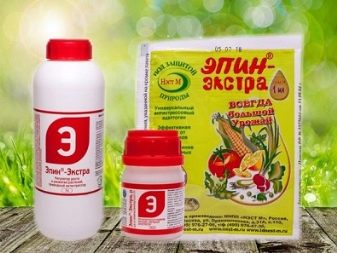
Treatment of diseases
Against fungal diseases, the flower must be treated with Bordeaux liquid or iron vitriol, Topaz or Falcon preparations. We list the most common fungal diseases of roses on the street.
- Rust - rusty and light brownish yellow spots all over the plate, leaves curl and fall off.
- Powdery mildew - the leaves turn white, as if covered with frost, the white powdery coating turns gray over time. Climbing roses most often suffer from the disease.
- Black spot - numerous brown spots at an early stage, they gradually turn black at the edges, grow and darken more and more, to almost black. Leaves begin to fall from the lower parts of the branches.
- Downy mildew - pale areas on the leaves, they gradually turn brown, the shade is slightly purple. The spots are often spread from the petiole. The leaves fall first from above.
- Gray rot - small brown spots on the stems, then they grow, the leaves do not have enough nutrition, they turn yellow and fall off, the flower petals become covered with a gray bloom, dry out at the edges. Most often it affects tea-hybrid and floribundas, especially densely double ones.
If signs of fungal diseases often appear on the site, it is not enough to cure the flower itself. A revision of agricultural technology is required, the choice of more resistant varieties. The latter includes the climbing rose.
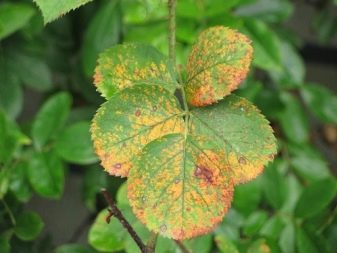

Pest control
There are more pests in the open field than in the closed one. The most dangerous is the inconspicuous downward rosy sawfly. The only symptom is that the tops of young shoots droop, then dry and die off. Important: this does not happen from the base, but closer to the tip. The affected shoots are cut off, the passages through which the insect laid eggs will be visible. The branches are cut to a clean cloth.They get rid of rose gold in the same way, the pest lays eggs in the shoots of roses, the larvae damage them, and parts of the plants dry out. Green rose aphid settles on stems and shoots, it is clearly visible, plants are immediately treated with "Fitoverm", "Aktellik", "Aktara".
Indoor roses, if planted in sterile soil and do not have an undesirable neighborhood with new plants, suffer from a less diverse set of pests. The most common indoor mite is the spider mite. It is easy to recognize at an early stage: a white cobweb appears at the joints between the leaves. In the future, they dry, darken, curl and fall off, the plant withers. If you do not take action in time, the rose may die. But getting rid of the pest is easy: just a couple of sprays with Fitoverm or another acaricide, as well as careful care of the rose. Spider mites do not settle on plants that are regularly sprayed. For prevention, it will be useful to treat roses with Epin solution 2 times a week.


Prevention measures
In the open field
- Thorough autumn cleaning. Most pests hibernate in a variety of garden litter (dead leaves, twigs, topsoil). Mulch should always be fresh and clean.
- Balanced feeding based on the initial conditions. Healthy plants hardly get sick, their natural immunity works.
- The optimal distance between plants, in thickened plantings, roses get sick more often.
- In the fall, spraying the rose with a solution of ferrous sulfate 3% will be useful.
- Deep digging of the soil under the bushes before sending for the winter. Larvae on top of the ground are less likely to survive frost.
In the rooms
- Timely spraying. As a rule, you cannot overdo it in living rooms. It will be useful to treat twice daily with warm, settled water.
- Watering with a clean, soft liquid, preferably thawed.
- Careful inspection and processing of all plants that enter the house. Pathogens and pests most often end up in an apartment with newcomers.
It will be very helpful to choose resistant, disease-free rose varieties. First of all, you can pay attention to the varieties that have a German ADR certificate. The roses that received it are evaluated by a special commission. The rating includes flowers that are grown without pesticides, their natural resistance is assessed. This rating is one of the few that allows you to choose a reliable, winter-hardy variety for the middle lane.
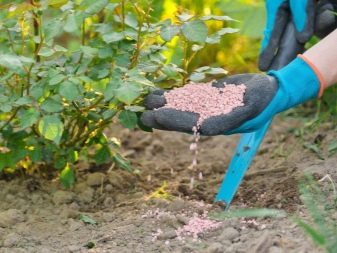
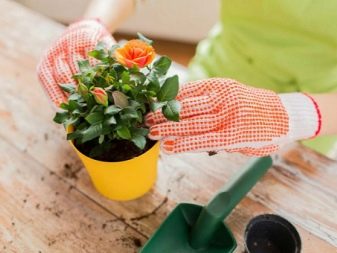

































































































The comment was sent successfully.